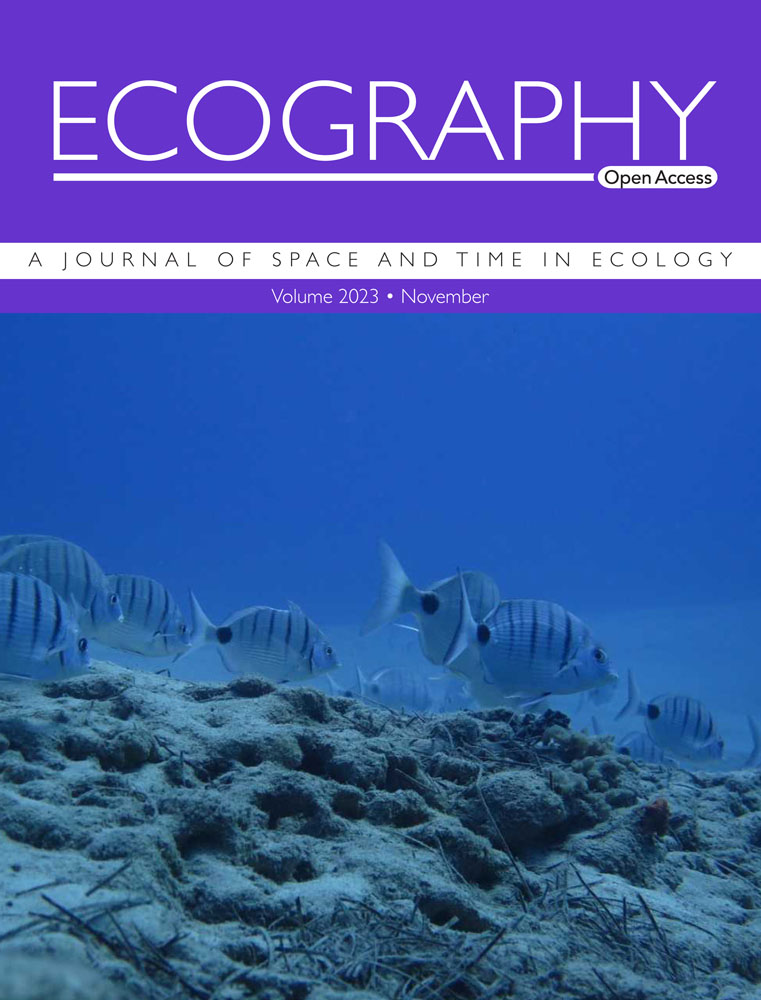Changes in abundance and distribution of European forest bird populations depend on biome, ecological specialisation and traits
IF 5.4
1区 环境科学与生态学
Q1 BIODIVERSITY CONSERVATION
引用次数: 0
Abstract
Forest bird abundance in Europe has remained stable overall, unlike farmland species which have declined dramatically in recent decades. However, this apparent stability may hide large variations among species and geographical regions. We aimed to determine if forest bird species with varying life histories and biome distributions show different population trends. We used functional traits and specialisation indices to study changes in abundance and distribution of European forest bird populations. For each species, we used European-level estimates of total abundance change over the last 40 years and changes in two components of spatial distribution: range change (i.e. area shrinkage or expansion) and distribution shift (i.e. latitudinal adjustments), both over the last 30 years. We also considered specialist groups of different biomes (i.e. boreal, temperate, Mediterranean and biome generalists) separately. We showed that boreal forest species have declined in abundance and range area, while Mediterranean and temperate species have increased in abundance and range, possibly as the result of warmer temperatures and forest expansion in these regions. The decline of boreal forest species may result from changes in forest structure and composition due to forestry practices, increasing temperatures and colonisation by warm-dwelling species. Among boreal species, mixed forest specialists (i.e. those preferring a mix of broadleaf and coniferous trees) declined the most in abundance and range and shifted northwards. In contrast, for vertebrate carnivores (i.e. birds of prey), we observed an increase in abundance among Mediterranean species and a southward expansion among all species. Our findings suggest that forest bird species in Europe may be influenced by the combined effects of land use and climate change, with these impacts varying across biomes. Our results highlight the need for maintaining and restoring key forest habitats (e.g. through increased protected areas and extensive management) and halting or limiting climate change, especially for boreal species.求助全文
约1分钟内获得全文
求助全文
来源期刊

Ecography
环境科学-生态学
CiteScore
11.60
自引率
3.40%
发文量
122
审稿时长
8-16 weeks
期刊介绍:
ECOGRAPHY publishes exciting, novel, and important articles that significantly advance understanding of ecological or biodiversity patterns in space or time. Papers focusing on conservation or restoration are welcomed, provided they are anchored in ecological theory and convey a general message that goes beyond a single case study. We encourage papers that seek advancing the field through the development and testing of theory or methodology, or by proposing new tools for analysis or interpretation of ecological phenomena. Manuscripts are expected to address general principles in ecology, though they may do so using a specific model system if they adequately frame the problem relative to a generalized ecological question or problem.
Purely descriptive papers are considered only if breaking new ground and/or describing patterns seldom explored. Studies focused on a single species or single location are generally discouraged unless they make a significant contribution to advancing general theory or understanding of biodiversity patterns and processes. Manuscripts merely confirming or marginally extending results of previous work are unlikely to be considered in Ecography.
Papers are judged by virtue of their originality, appeal to general interest, and their contribution to new developments in studies of spatial and temporal ecological patterns. There are no biases with regard to taxon, biome, or biogeographical area.
 求助内容:
求助内容: 应助结果提醒方式:
应助结果提醒方式:


